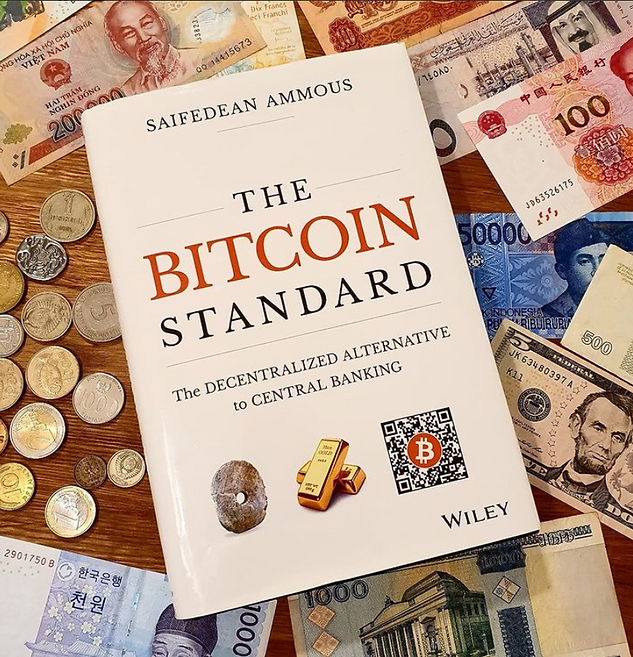
The Bitcoin Standard - Saifedean Ammous
Money as a medium of exchange and storage of value needs to have two important characteristics:
-
The flow to stock ratio must be as low as possible (less new money created compared to existing stock the better)
-
It has to be difficult to make new money
Money
Money serves two principal functions: 1) medium of exchange and 2) store of value. In order to fit these criteria money has to be:
-
Sellable across space - meaning that it can be transferable from one location to the next and from one holder to the next without much frictions or costs
-
Sellable across time - meaning that the money used as a store of value today will be worth as much tomorrow. This is a prerequisite for store of value function
Primitive money
Some examples of primitive money:
-
Rai stones in the Yap islands - stones where not movable themselves, but the ownership rights to the stones were transferable - a first ledger
-
Aggy beads in Africa - were made of meteorite or glass stone where glassmaking technology was very expensive and not very common
-
Seashells - usually the more rare varieties were used
-
Cattle and salt in ancient Egypt and Israel. Cattle was used to settle large transaction, while salt was used to settle the daily transactions
Gold
Gold across centuries has been used as a universal form of money, for it’s main qualities:
-
High stock to flow ratio - it is very difficult to mine gold, and the amount of gold increases by only about 2% per year through mining
-
Resistance to nature forces - gold is a very immutable metal, it does not rust or does not react with any substance. Meaning that it can remain in its purest form across ages
-
Gold has also very high monetary density - meaning that the value per weight is very high making it easy to transport large monetary amounts
Government Money
Money that is issued by the governments and is not backed by gold is typically called fiat money. The proliferation of fiat money has started since the end of World War I, where countries laden by debt had to find a way to pay their debts back without hampering their economies. Printing money was the best solution at the time.
However it did not always work as intended. Weimar Republic of Germany went into a hyperinflation in the period from 1920 to 1923. This was caused by the government trying to pay reparations (term used to define the compensation that the losing party needs to pay to the winning parties) through printing money. The hyperinflation was so strong, that all the Deutsche Mark notes in circulation in the 1920 could only buy you 3 loaves of bread in 1923.
The US held on to the gold standard until 1933 where Franklin D. Roosevelt, trying to solve the Great Recession, decided to engage in stimulative measures requiring all citizens to turn in their gold in exchange for gold certificates or money at a fixed price. The price was increased again in 1934 to $35 per ounce giving the Federal Reserve some room to maneuver. The US finally went of the gold standard in 1971 when they announced that they will no longer be redeeming US dollar notes in gold.
Digital money
Digital money is based on the blockchain principle where transactions and ownership stakes are recorded on the blockchain which is immutable and is stored on a distributed ledger without any one party having full control of the network.
The digital money as Bitcoin meets all the requirements of sound money:
-
Medium of exchange - it is fully divisible and easily transferable across geographies and between people.
-
Store of value - since it’s supply is limited
-
Security - given the distributed nature of Bitcoin and other cryptocurrencies it is more secure than cash or bank deposits
Bitcoin
Created by an anonymous Satoshi Nakamoto Bitcoin is a decentralized currency that works on a peer-to-peer network. Where each coin is mined through the process called proof of work - the servers compete in solving complex problems and the one who solves it first receives the reward. The record of all transactions is held on the blockchain and is verified by the nodes (the servers). In order to modify the blockchain one has to control more than 50% of the nodes, which at the current state of the network is not possible.
While many cryptocurrencies have been created since Bitcoin, the author claims that none of them are as successful and will ever replace Bitcoin. He is actually a proponent of proof of work concept as it ensures the stability of the network - one has to expend energy in order to verify transactions and mine coins - this is the purest control and economic incentive.
